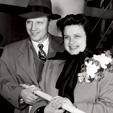| Flight Into Eternity
His Hatred Turned to Love,
Alumnus Jake DeShazer Fought
for the Hearts of His Enemies
A friendly, soft-spoken man with a degree in
missions from Seattle Pacific College resides in Salem, Oregon, and turns 92 this year.
In what seems to him like another life, Jacob Daniel DeShazer flew with the Doolittle
Raiders in World War II, bombing Japan in response to
that country�s surprise attack on Pearl Harbor.
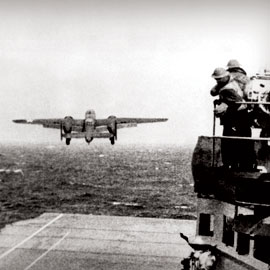 Bombardier Jake DeShazer�s B-25 bomber
was the last to take off from the lurching deck of the U.S.S.
Hornet. Ahead lay the enemy territory of Japan. Bombardier Jake DeShazer�s B-25 bomber
was the last to take off from the lurching deck of the U.S.S.
Hornet. Ahead lay the enemy territory of Japan.
|
 |
Scholars
say the Doolittle Raid
was a significant turning
point in the war, an
action that demoralized
the Japanese while bolstering
American resolve. For
DeShazer, it was the
beginning of a long
nightmare that ended
in one of history�s
most remarkable awakenings. Had Corporal Jake DeShazer been a gambling
man, he could have seen
the cards stacked against
him from the start. President
Franklin Roosevelt had
ordered an air assault
on Japan four months
after Japanese bombers
ripped apart eight battleships
in a sneak attack on
the U.S. Pacific Fleet,
killing more than 3,300
personnel and wounding
nearly 1,300 more. The
daring and much-decorated
Lt. Col. James H. �Jimmy� Doolittle
was given the command
of Roosevelt�s
top-secret mission. He
came to DeShazer�s
air base looking for
a few good men.
Doolittle was brutally honest: The mission was a dangerous one.
Chances were good that they would be killed. How many would volunteer?
One by one, men said yes, including DeShazer. The farmer-turned-bombardier
admits that he was too much of a coward to say no.
Sixteen Army B-25
bombers and their five-man crews steamed toward the coast of Japan
crammed aboard the U.S.S. Hornet aircraft carrier. Still 200 miles
from the night-launch position, the carrier was spotted by a Japanese
fishing boat, which radioed a warning to Japan. The options were
stark and few. Either the Army planes took off in broad daylight
in gale-force winds, or they would be pushed overboard to allow the
Navy fighter planes on deck to protect the fleet from possible
attack. The call to arms crackled over the loudspeaker. �Army pilots,
man your planes!� The date was April 18, 1942.
Heavy seas broke over the flight deck. Hurriedly, the planes were
stocked with extra gasoline for the flight into unknown territory.
Once airborne, the airmen could not re-land on the carrier, and
they did not know how far their fuel would take them.
The roar of
the aircraft was ear-splitting. DeShazer�s overloaded plane — #16,
Thunderbird Squadron — was the last one off the carrier.
Like his colleagues, the pilot timed his launch to coincide with the rising of
the bow to ensure maximum lift.
Once successfully in the air, DeShazer moved
into position in the nose of the plane. He knew there was a jagged 1-foot hole
in the bomber�s plastic windshield, but he�d kept that information to himself
for fear their part in the mission would be scrapped. Drag from the open hole
slowed the plane�s air speed, and #16 soon fell behind.
Their target was the oil storage tanks at Nagoya, 300 miles south of Tokyo.
Flying at 500 feet, DeShazer dropped 2,000 pounds of incendiary bombs. He scored
a direct hit, but smelled the smoke of return fire as enemy shells exploded
around him. Payload delivered, the plane flew on toward China.
A night of heavy fog enveloped the five men in bomber #16 as they tried desperately
to get beyond Japanese-held territory. Dangerously low on fuel, they circled
a town, hoping to spot an airfield where they could land. But after nearly 14
hours in the air, the fuel gauge warning light flashed red, and the pilot said, �We
gotta jump.�
The crew parachuted into darkness and was separated. DeShazer remembers landing �with
an awful jolt� on top of a grave in a cemetery, fracturing some ribs. His mother
in Oregon awoke suddenly during the ordeal and felt compelled to pray for him.
The next day, after several hours of painful walking, DeShazer was surrounded
by 10 Japanese soldiers armed with bayonets, pistols and swords — and thus began
40 months of torture and imprisonment, 34 of them in solitary confinement.
Of DeShazer�s crew, all were captured. The pilot and the engineer gunner were tied
to small crosses and executed. Beatings, fear of execution, starvation rations,
severe dysentery and delirium became the grim companions of those left alive.
The only source of strength DeShazer knew in his tiny cell was a bitter hatred
for the enemy.
But back home, people were praying. When erroneously informed
by the U.S. Army that all of the captured airmen had been executed, DeShazer�s
mother replied, �I have word from a higher authority that my son is still alive.� Her
faith was rewarded. Secretly, Japanese Emperor Hirohito commuted the death sentences
of the remaining captives for fear of U.S. retaliation.
DeShazer had always kept
his parents� Christian faith at a skeptical distance.
Brutal treatment at the hands of the Japanese
further hardened his heart. But after two long years of captivity, a light began
to dawn in his soul. Fellow prisoner
Lt. Bob Meder reminded him that God
was in control and that Jesus Christ,
his son, had died for all of humanity.
When Meder died of slow starvation, DeShazer pondered what made people hate one
another. He thought of the claim that Christianity could change hatred into love
and was gripped with what he later called
�a strange longing� to read the Bible.
Incredibly, the Japanese supplied the
airmen with a copy of the Bible in English.
As starved for truth as he was for food, DeShazer devoured the Scriptures. For
hours, he read and marveled at the redemption he found there, and at the admonitions
to forgive and love one�s enemies. On June 8, 1944, he read Romans 10:9: �If
thou shalt confess with thy mouth the Lord Jesus and shalt believe in thine heart
that God hath raised him from the dead, thou shalt be saved.� It was then that
the emaciated Doolittle Raider asked God to take command of his life. �My heart
was filled with joy,� he says. �I wouldn�t have traded places with anyone.�
Bob Hite, now 84 and copilot of DeShazer�s crew, recalls the transformation that
Bible brought to them all, especially to his bombardier: �Jake was in a cell
adjoining mine. Whenever we wanted to communicate without the guards knowing,
we�d knock on the wall, �Shave and a haircut, six bits.� That was the signal
to go to the toilet, lift the lid, and speak into the john. Our voices carried
through the plumbing.
�One morning early, I knocked but got no response from
Jake. I was worried. Hours went by and no word. A guard and a supervisor yelled
into Jake�s cell to get his attention. Nothing. Finally, seven hours later, at
around two in the afternoon, I heard a knock. I asked him what in the world happened.
He said, �I was praying, and the Lord revealed to me that the war will end today.
We will not be shot. We will be released.� That was August 10, 1945, the day
the atomic bomb was dropped on Hiroshima.�
DeShazer wasn�t quite finished explaining what he had heard. �God wants me to
come back and preach the gospel to these people,� he said.
Ten days later, American paratroopers landed on the prison
grounds and liberated Doolittle�s men. In all, eight men from two Doolittle bombers
were taken prisoner. Three were executed; one died of starvation; and four survived.
Back
in the States, the rescued Raiders were big news. The normally reticent DeShazer
was thrust into the headlines and onto the radio. He was swamped with requests
to speak at churches and youth rallies. Inevitably, some thought his decision
to return to Japan as a missionary would be short-lived. Others questioned his
motives. When he called the parents of one of the executed airmen to express
sympathy, he was told not to call again.
But no one should have underestimated the effect of DeShazer�s decision on the rest
of his life. He believed he had been spared for a purpose, and no power on earth
could deter him from it. At age 33, the newly discharged airman was resolved to
obtain his college degree and leave for Japan as soon as possible.
Soon he was receiving catalogs from
dozens of colleges across the country hoping he�d enroll in their missions programs.
Helen Andrus, DeShazer�s half-sister, was secretary to C. Hoyt Watson, president
of Seattle Pacific College. Watson extended a personal invitation to DeShazer
to attend SPC and, just two months after his release from prison, he was in the
classroom. He says he grew in spirit and understanding, and felt �as if I had
come in from a howling windstorm into a good strong house.�
It was at SPC that
he met junior Florence Matheny. Today, after nearly 58 years of marriage, Florence
recalls, �I already knew I had a call from the Lord to missionary work, just
not where or how. Jake answered that.� A year after DeShazer�s release from prison,
he and Florence were married. Another year passed, and the first of their five
children was born.
His college days were packed with study and speaking engagements.
But six years after DeShazer raided Japan, he walked across the platform in McKinley
Auditorium to receive his diploma from President Watson. Already accepted as
Free Methodist missionaries, the DeShazers set sail for Japan in December 1948.
Japan was abuzz with the news of DeShazer�s arrival.
Crowds thronged his ship at the Yokohama docks. A million tracts containing his
testimony, I Was a Prisoner of Japan, had been distributed ahead of his arrival.
People were curious to see the former P.O.W. and to learn about the love he professed
for his captors. DeShazer preached four or five times a day for the next six
years, and thousands of Japanese became Christians, including two
of his former prison guards.
�My love for the Japanese people was deep and sincere,� says
DeShazer. �I know that it came from God.� And it was mutual. When their son Paul
became critically ill with encephalitis and fell into a coma, he was prayed for
by Christian friends in both Japan and the United States. Though the medical
staff at the U.S. Army hospital had never seen a more severe case of the disease,
the boy recovered completely.
For three decades, the DeShazers lived in Japan,
putting their language studies with SPC Professor Bokko Tsuchiyama to good use.
Where once DeShazer was known derisively as dai-go-go, or Number 5 (for cell
#5), he was now known respectfully as sensei, or teacher. He preached in churches,
schools, hospitals, tent meetings and coal mines. He and Florence helped plant
23 churches, including three from their home, and one in Nagoya, the city that
DeShazer had bombed.
�My dad�s evangelistic zeal just keeps going and going,� says
daughter Carol Aiko DeShazer Dixon. Dixon practiced her student teaching while
at SPU in 1979. Her brother Paul DeShazer graduated from Seattle Pacific in 1969,
sister Ruth DeShazer Kutrakun in 1980.
Until recently, even in retirement, Jake
DeShazer continued to receive frequent invitations to speak and give interviews.
Every April, the surviving Doolittle Raiders hold a reunion, but the numbers
dwindle as the years pass.
The oldest surviving Raider, DeShazer did not feel
well enough to attend this year�s reunion, but he keeps in touch with his Doolittle
brothers. In a glass case guarded by two airmen at the Air Force Academy in Colorado
Springs, there are 80 sterling silver goblets engraved with the names of those
men whose motto was �Ever into peril.� Upon each Raider�s death, his goblet is
inverted. Of the original number, only 17 remain upright.
�We�re not heroes,� the
1973 SPU Alumnus of the Year insists. �We saw a job to do and did it.�
The pace
has at last slowed so that the DeShazers can devote themselves to their children,
10 grandchildren and four great-grandchildren. There is a movie about DeShazer�s
life in development, as well as a new book. The first book on his experiences
was written in 1950 by President Watson.
The DeShazer legacy lives on in Japan,
where in 1971 the Doolittle Raider was appointed superintendent of the Eastern
Conference of Independent Free Methodist Churches. Though today only 1�2 percent
of the population of Japan is Christian, many of those can trace their faith
heritage back to the American airman and his wife, who once held children�s Bible
classes in their Japanese home. The DeShazers have returned to Japan several
times to encourage the churches and renew ties with fellow believers.
Dixon has
vivid memories of the Holy Spirit abroad in Japan and her father sharing his
story again and again. As a young child, she was so moved by his conviction that �whenever
my father would give an altar call at the end of his testimony, I was usually
the first one at the altar!�
Florence DeShazer chuckles now at such memories and
marvels over how long she and her husband have been there for one another. �When
I had my two back surgeries, Jake took care of me,� she says, smiling at her
mate. �Now he needs me to look after him.� And after living one of the most amazing
stories to come out of World War II, they definitely know what it is to have
God look after them both. R
— BY
CLINT KELLY
— PHOTO
BY USAF (#41195)
Back to the top
Back to Home |
 |
|
|
|




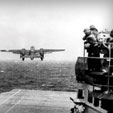
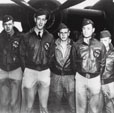
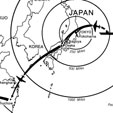

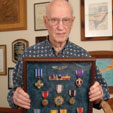
_thum.jpg)
